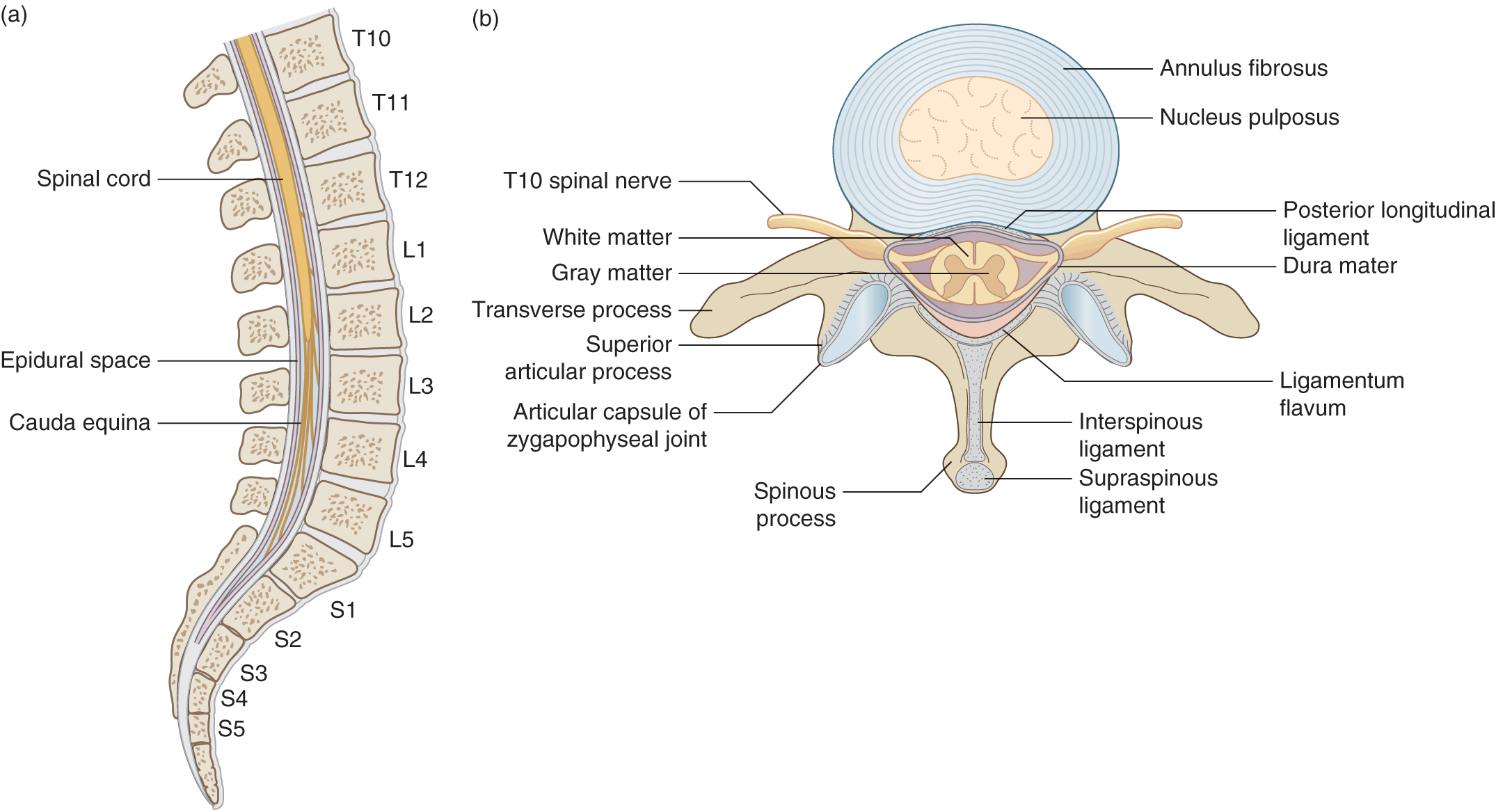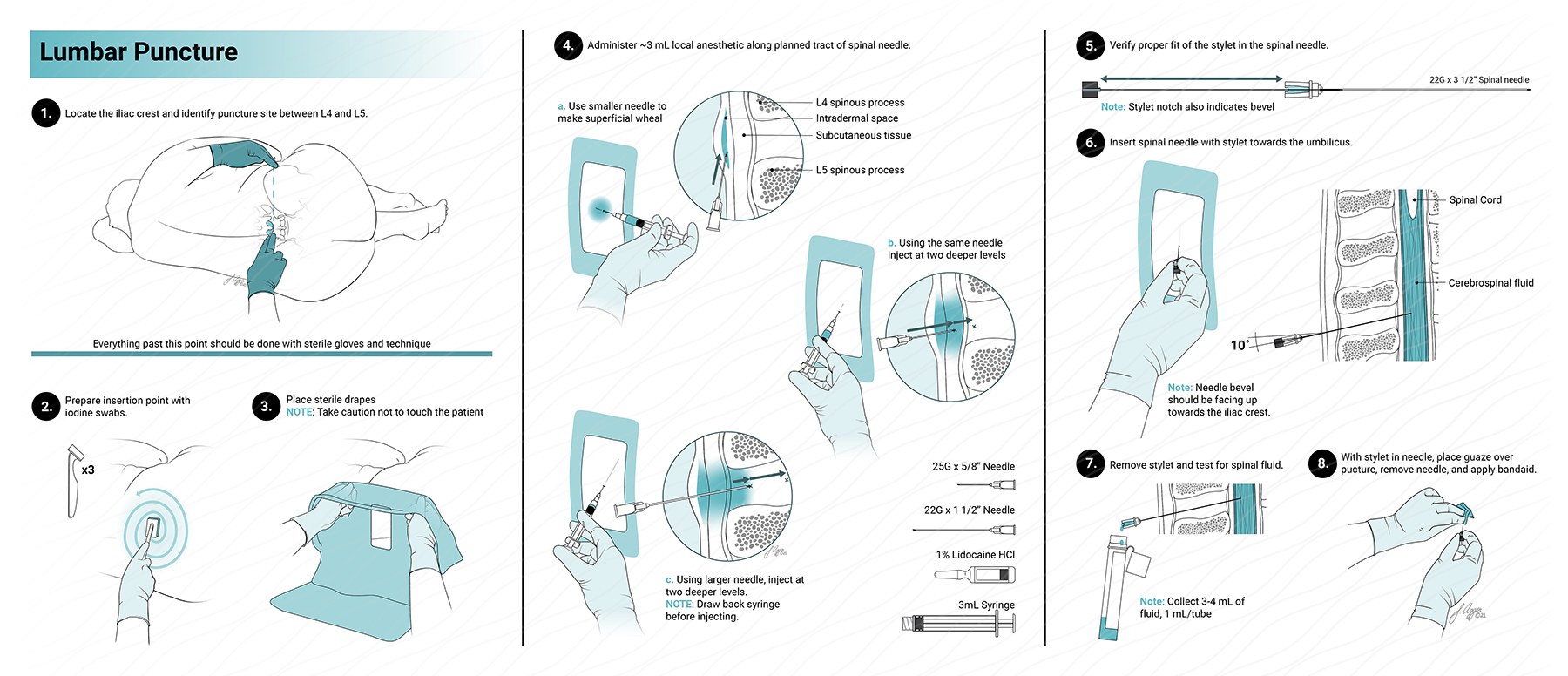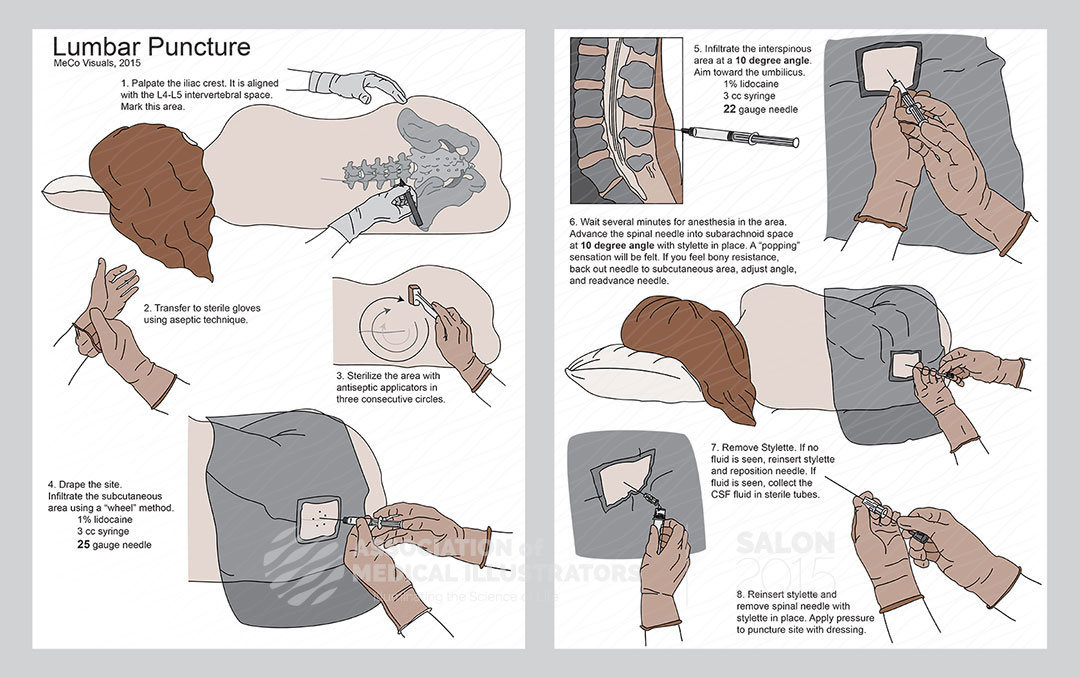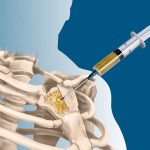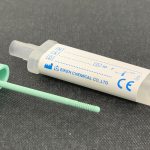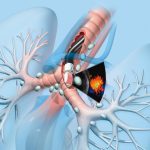
A lumbar puncture is a test to check the fluid that circulates around the brain and spinal cord. This is called the cerebrospinal fluid or CSF.
Why do I need a lumbar puncture?
A lumbar puncture can check for cancer cells or for infection in the CSF.
Doctors remove some of the CSF to test for cancer cells. They use a needle to take a sample of the CSF from your lower back.
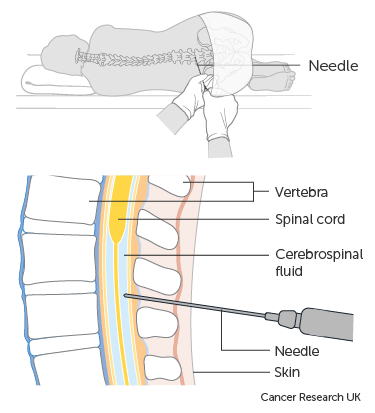
You normally have this test in the outpatient department under local anaesthetic. This means you are awake but the area is numb.
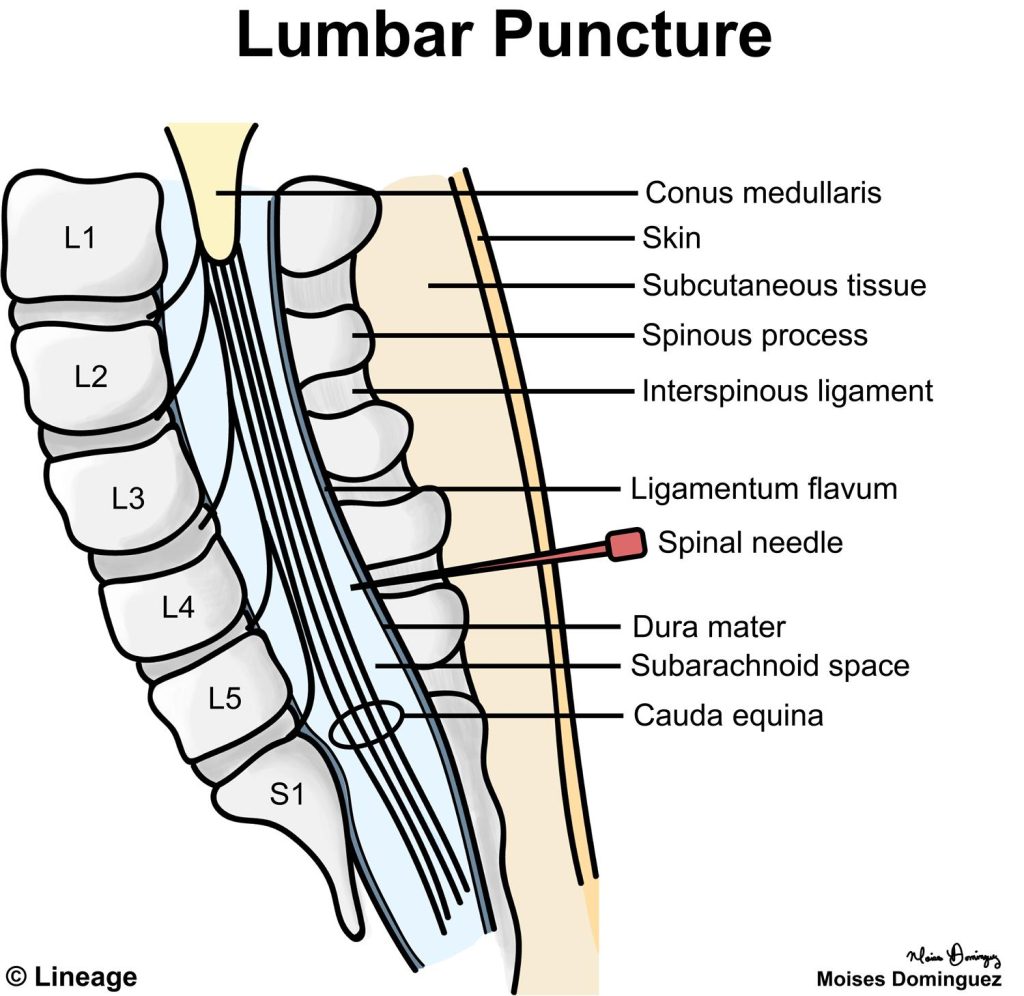
What Is a Lumbar puncture?
A lumbar puncture or LP is a test to check the fluid that circulates around the brain and spinal cord.
This fluid is called cerebrospinal fluid or CSF.
You might have an LP to see if there are any cancer cells or an infection in the CSF.
You can also have chemotherapy into the CSF by lumbar puncture. This is called intrathecal chemotherapy.
Your doctor will let you know about any preparation beforehand.
Let them know if you are taking medication to thin the blood or if you are allergic to anything.
The test takes about 20 to 30 minutes, but you will be in the hospital for a few hours.
When you arrive, your doctor will explain the procedure and ask you to sign a consent form.
This is a good time to ask any questions you may have.
Your nurse will ask you to take off your clothes, and put on a gown, but you can keep your underwear on.
You have the lumbar puncture on the lower part of your spine called the lumbar region.
You may have this sitting or lying down.
To start the doctor drapes a sterile cover over you, then they clean the area with antiseptic fluid, which can feel cold.
Next, you have an injection of local anaesthetic to numb the area.
When it’s numb, the doctor puts the lumbar puncture needle in through the skin. It goes into the small of your back and into the space around your spinal cord.
You might feel some pressure or discomfort when the needle goes in, but this shouldn’t be painful.
Once it’s in the right place a small amount of the CSF drips out into the pot. It only takes a few seconds.
At the end, your doctor takes the needle out and puts a dressing or plaster on your back.
You lie flat for an hour or so after the test, during this time your nurse will take your blood pressure and pulse.
You usually go home the same day.
You should have someone to take you home and you should not drive for at least 24 hours.
A lumbar puncture is a very safe procedure, but some people may have side effects including a headache.
This might start soon after the test or later when you get home. It can last for a couple of days.
If you have a headache take painkillers, lie flat and drink plenty of fluids.
You might have some pain and bruising around your lower back these should settle in a couple of days.
You may have some other side effects, these are not very common, but you should call your hospital advice line straight away if: you have a high temperature, you are being sick, your eyes are sensitive to bright lights, you have tingling or numbness in your legs or you have severe headaches or if you have any other concerns.
For more information about Lumbar punctures go to CRUK dot org forward slash about hyphen cancer.
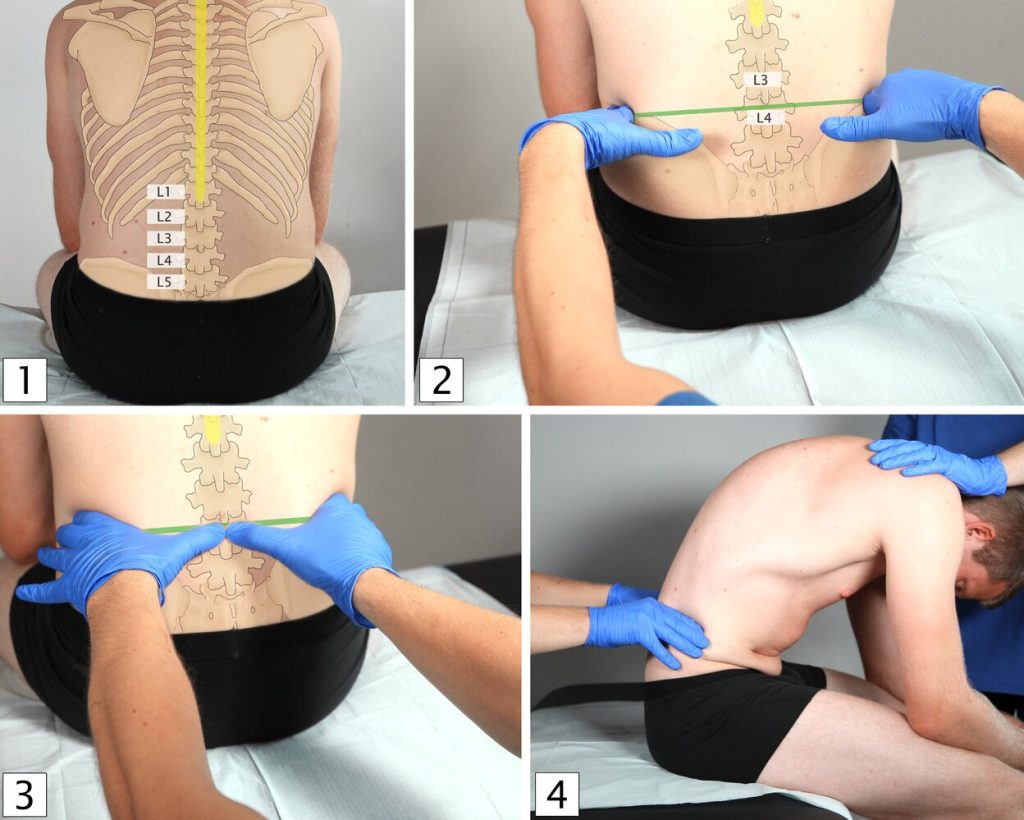
Preparing for your lumbar puncture
Check your appointment letter for how to prepare for your lumbar puncture test. You are usually able to eat and drink before your test. Tell your doctor if you’re taking medicines that changes how your blood clots. This includes:
- warfarin or heparin
- aspirin
- clopidogrel
- apixaban or rivaroxaban
- ticagrelor
Your doctor will tell you if you need to stop taking these medicines and how long before your test. All other medicines you can usually take as normal.
Children and some adults may have this under a general anaesthetic (GA)  or with sedation
or with sedation  . If you are having it this way you have to stop eating and drinking for some time before the test. Your appointment letter or a member of the healthcare team will tell you how long for.
. If you are having it this way you have to stop eating and drinking for some time before the test. Your appointment letter or a member of the healthcare team will tell you how long for.
Just before the procedure, you are asked to go to the toilet to empty your bladder and bowels.
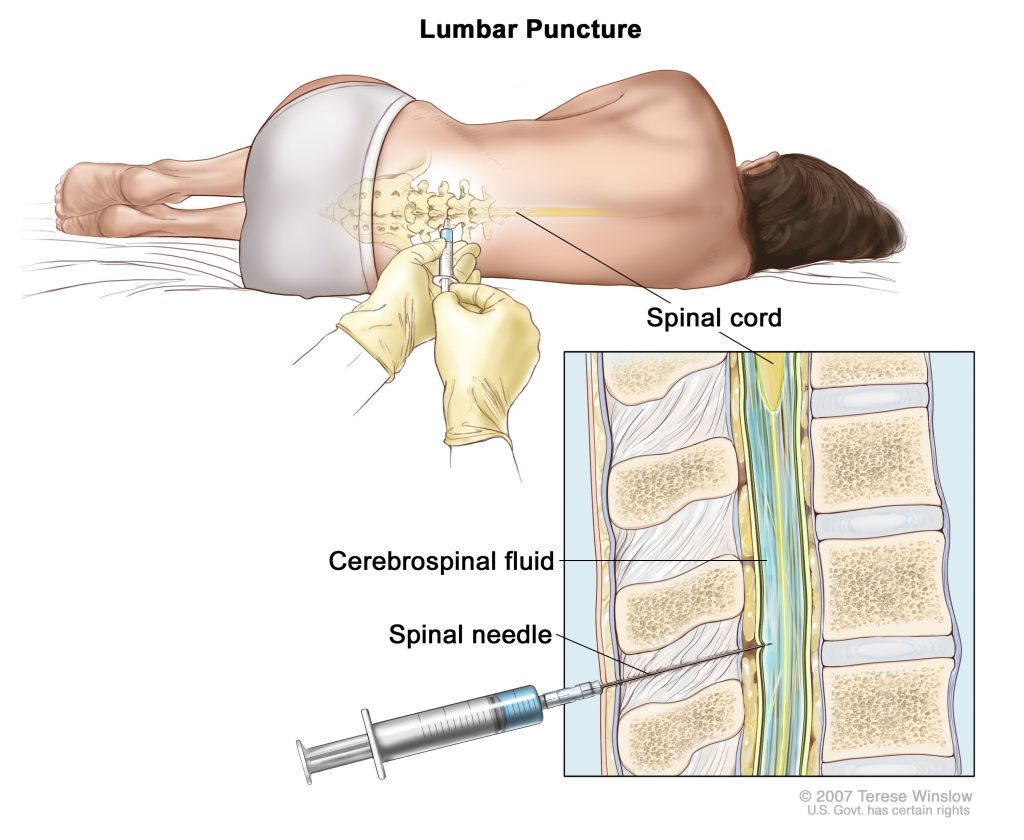
What happens during a lumbar puncture?
Your doctor will give you information about the procedure and ask you to sign a consent form. This is a good time to ask any questions you may have.
A staff member asks you to take off your upper clothing and put on a hospital gown.
You usually lie on your side with your knees tucked up into your chest. It’s important to stay as still as you can during the test, so make sure you are comfortable before it starts.
The doctor or nurse drapes some sterile covers over you. Then they clean the area with antiseptic fluid, which can feel cold.
You have an injection of anaesthetic into the area, this can sting for a few seconds. When the area is numb, the doctor or nurse puts the lumbar puncture needle in through the skin. It goes into the small of your back and into the space around the spinal cord. You might feel some pressure when the needle goes in.
Once it’s in the right place, the fluid drips out into a pot. This only takes a few seconds.
Your doctor or nurse takes the needle out and puts a dressing or plaster on your back.
The whole test takes about 20 to 30 minutes. It can be uncomfortable but it’s not usually painful.

After your lumbar puncture
You lie flat for an hour or so after the test.
Tell your doctor or nurse if you have a headache, so they can give you some painkillers. Lying flat and drinking plenty of fluids may relieve your headache. This may last for a couple of days so make sure you have painkillers at home.
You will have a dressing on the skin where they did the test. You usually remove this the next day.
You can usually go home the same day.
Possible risks
A lumbar puncture is a very safe procedure but your nurse will tell you who to contact if you have any problems after your test. Your doctors will make sure the benefits of having a lumbar puncture outweigh these possible risks.
Some of the risks include:
Headache
This can develop up to two days after the test. If your headache doesn’t get better contact your hospital team.
Lower back pain
You might have lower back pain after the local anaesthetic has worn off. This usually lasts for a couple of days after the test. Contact your hospital team if the pain is severe.
Bleeding
You usually have a small spot of blood on the dressing on your back. Contact your hospital team if you have bleeding for more than 15 minutes.
Infection
This is very rare. You may have a high temperature or generally feel unwell.
Contact the hospital straight away if you:
- have a high temperature
- are being sick
- are sensitive to bright light
- have tingling or numbness in your legs
- have a severe headache
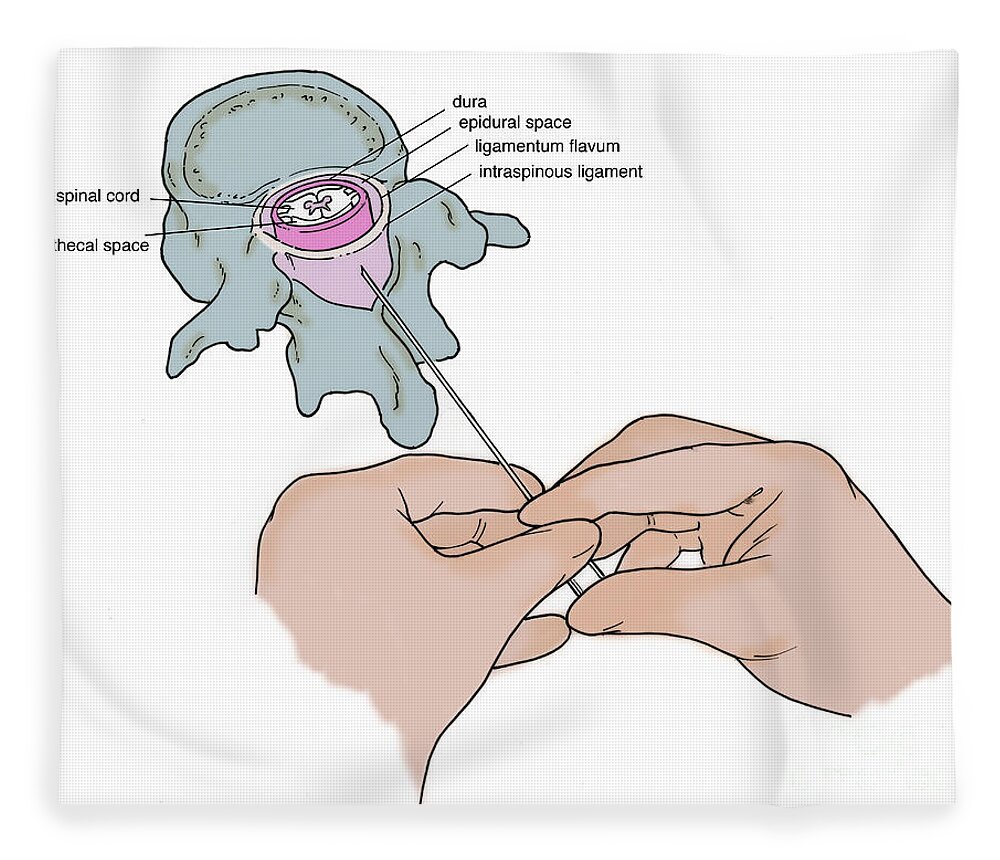
Getting your results
The fluid is sent to the laboratory and looked at under a microscope for cancer cells.
It can take time for test results to come through. How long will depend on why you’re having the test. It could be a day or two but can be up to a couple of weeks.
If you have not had your results a few weeks after your test, you could contact your doctor to chase your results for you.
Waiting for results can be an anxious time. It might be helpful to talk to someone close to you.
